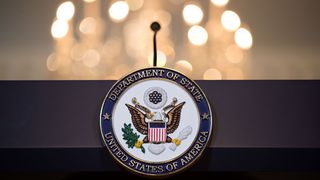Former US Defence Secretary Jim Mattis once quipped that, “if you don’t fund the State Department fully, then I need to buy more ammunition.” In assessing the wrangling over the forthcoming US federal budget, it seems that ammunition will be in ample supply; it’s hard to say the same for American diplomacy.
Lawmakers in Congress recently proposed a State Department and Foreign Operations budget $12 billion below what the administration had requested, and a $7 billion drop from the previous year. Proposed cuts target ideological hot button issues for Republicans such as funding for climate and gender related programs, but the proposal would also reduce USAID and funding for multilateral organisations.
Granted, this bill is only the starting point for negotiations. There’s a high probability that many of its more controversial elements will be negotiated out when the House and the Senate reconcile their budget proposals in Conference later this year.
Nevertheless, it augurs poorly for the State Department’s hopes of steady – let alone increased – funding. US Secretary of State Antony Blinken has warned of “huge trade-offs” if the Department were to face further cuts to those it already endured last financial year.
These trade-offs will likely be felt in US outreach in the Indo-Pacific. The State Department’s 2023 Indo-Pacific Engagement Report had already identified a US$41.3 billion shortfall in aid and diplomatic resources needed to compete with China’s influence over the next five years. Further cuts would only worsen that deficit.
These developments underscore that President Joe Biden’s best efforts to put the State Department “back at the centre of [US] foreign policy” remain incomplete.
The US foreign service suffered steep budget cuts, a hiring freeze, and an exodus of career professionals throughout the Trump administration. The State Department has spent recent years making up for lost ground. For example, after losing ten per cent of its workforce under Trump, the foreign service has since rebounded to its former level. A recent Congressional Research Service report has illustrated that funding under Biden has also increased. Though Congress has not met the Biden administration’s requests dollar for dollar, State Department funding today far exceeds Trump-era levels.
But the repair job is far from complete.
Budget caps negotiated by Biden and Congress last year spurred cuts across the federal government, including within the State Department and Foreign Operations Program. As a result, appropriations for essential USAID and diplomatic functions have depended upon contentious supplemental spending packages which, as months of political infighting over Ukraine assistance demonstrated, are far from a reliable means of funding US strategic priorities.
Political battles have also frustrated diplomatic appointments at different points. A backlog of more than 60 State Department nominees to various posts had emerged in the US Senate by July 2023. Though this number has since declined, the wait-time for confirmation has been generally long for Biden nominees in comparison to past presidencies.
As Blinken warned before entering office, the cuts the Trump administration initiated “penalize you in all sorts of ways that will go on for generations, not just for a bunch of years.” Lost expertise, including through the edging out of experienced, apolitical personnel, is difficult to regain.
Staffing challenges have also been compounded by global crises, with a number of senior career diplomats resigning in protest of the administration’s approach to events in the Gaza Strip.
“Right-sizing” the State Department budget is an ongoing problem. Lawmakers and commentators have remarked for decades that the US foreign service is underfunded. But this is also what makes a potential second Trump term all the more worrying – both for US diplomats and for America’s partners – if his first term record and recent comments about purging the “deep state” are anything to go by.
It’s true that the strong bipartisan consensus in Washington regarding the China challenge will encourage continuity in US engagement in Asia. Even in the controversial House proposal for the State and Foreign Operations program FY2025 budget, key Indo-Pacific initiatives are protected. More broadly, lawmakers are making attempts to insulate the State Department’s workforce against political partisanship under a future administration.
But recent setbacks for the State Department underscore what we have argued elsewhere: that in this current political and fiscal environment, the resourcing of US Asia strategy – be it in defence or diplomacy– may suffer collateral damage in larger budget debates amongst Congress and the administration.
In that context, those echoing Mattis’ call for a fully funded State Department may be left disappointed, at least in this budget cycle.










